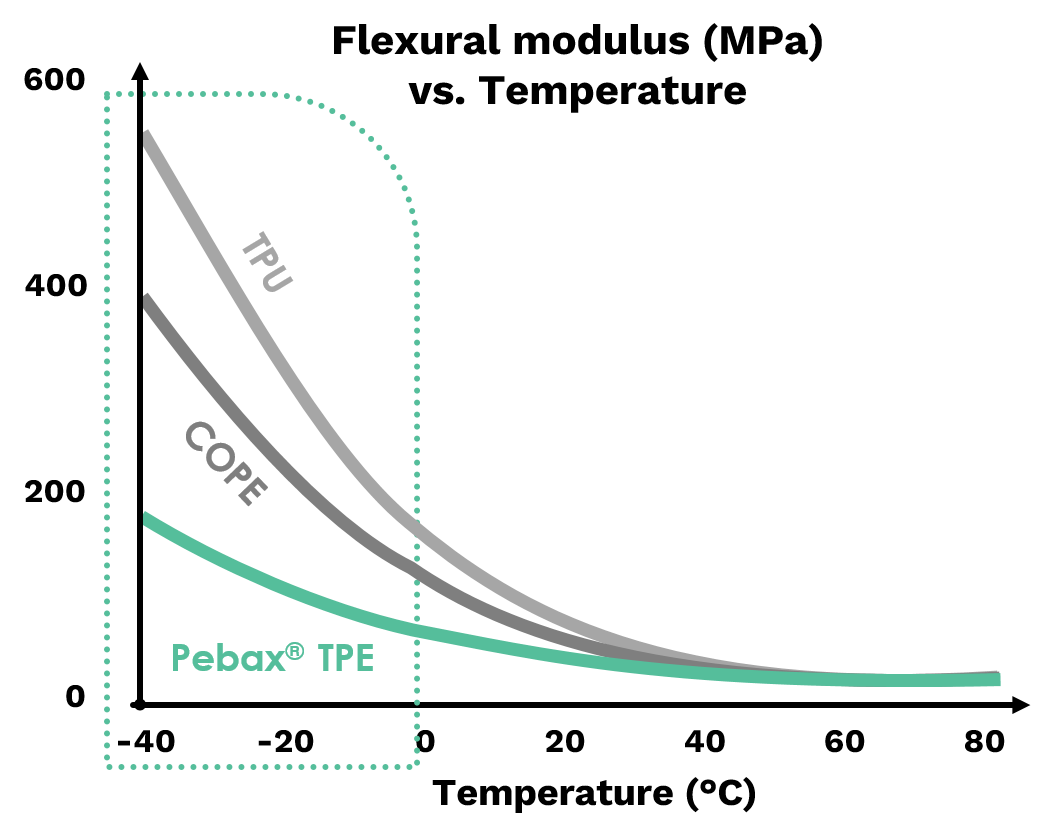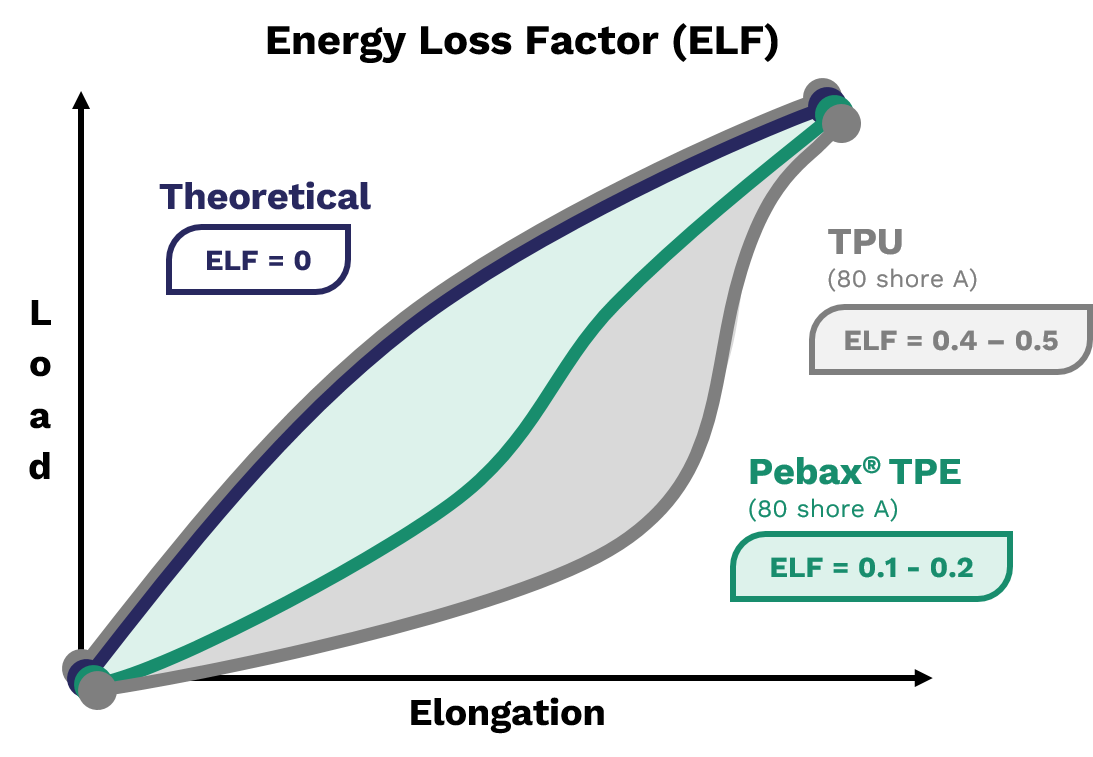Conveyor Belts, Power Transmission Belts, and Silent Gears
Pebax® Elastomers Offer Outstanding Energy Return for Optimal Power Transmission
Hysteresis is defined as the energy lost during a cyclic mechanical stress of a material and is a function of the modulus and the loss factor, tan ∂.
The tailored molecular microstructure of Pebax® resins contributes to lower hysteresis and tan ∂ when compared to other commonly used thermoplastic elastomers. The combination of this property (over a wide temperature range) as well as tremendous toughness, light weight and ease of processability make Pebax® resins powerful candidates for highly efficient power transmission belts.
Monolithic Conveyor Belts with Pebax® Elastomer
Monolithic conveyor belts are made from a single material and are often used in manufacturing industries such as textile, food (meat, fruits, vegetables), wood, and more. A single large continuous piece of Pebax® material can be used for a high-performance mono-material conveyor belt. Pebax® elastomers cover a wide range of hardness and show high reliability in terms of energy loss, temperature resistance, wear and tear resistance, and anti-static properties.
Power Transmission Belts with Pebax® Elastomer
A synchronous belt or timing belt is a type of power transmission belt that is used to transfer rotational motion between two or more shafts in machinery and mechanical systems. Power transmission belts usually have a composite structure in which Pebax® Elastomers are the intermediate layer highly compatible with the fabric and the rubber layers. Pebax® Elastomers are the material of choice for multi-material power transmission belts thanks to their excellent processability, weldability, lightness (adapted for high speed), and low noise and vibrations.
Flexural modulus (MPa) vs. Temperature

Energy Loss Factor (ELF)

Pebax® Elastomers in Power Transmission Belts
| Pebax® Elastomers Main Properties | Applications | Pebax® Solutions | |
| Low hysteresis | Low energy dissipated and heat build-up High level of power transmitted |
Belting | Pebax® 33 series: 25 to 55 ShD grades |
| Excellent flex fatigue and resistance | Low relaxation | Belting | Pebax® 33 series: 40 to 70 ShD grades |
| Creep resistance | Pebax® 33 series: 25 to 55 ShD grades | ||
| Low vibration and noise Low density |
Belting | Pebax® 33 series | |
| Ease of processing | Easy and strong splicing | Belting | Pebax® 33 series |
| Chemical resistance | Belting | Pebax® 33 series: 40 to 70 ShD grades | |
Looking for technical data?
Search for technical data sheets and even compare grades side-by-side
